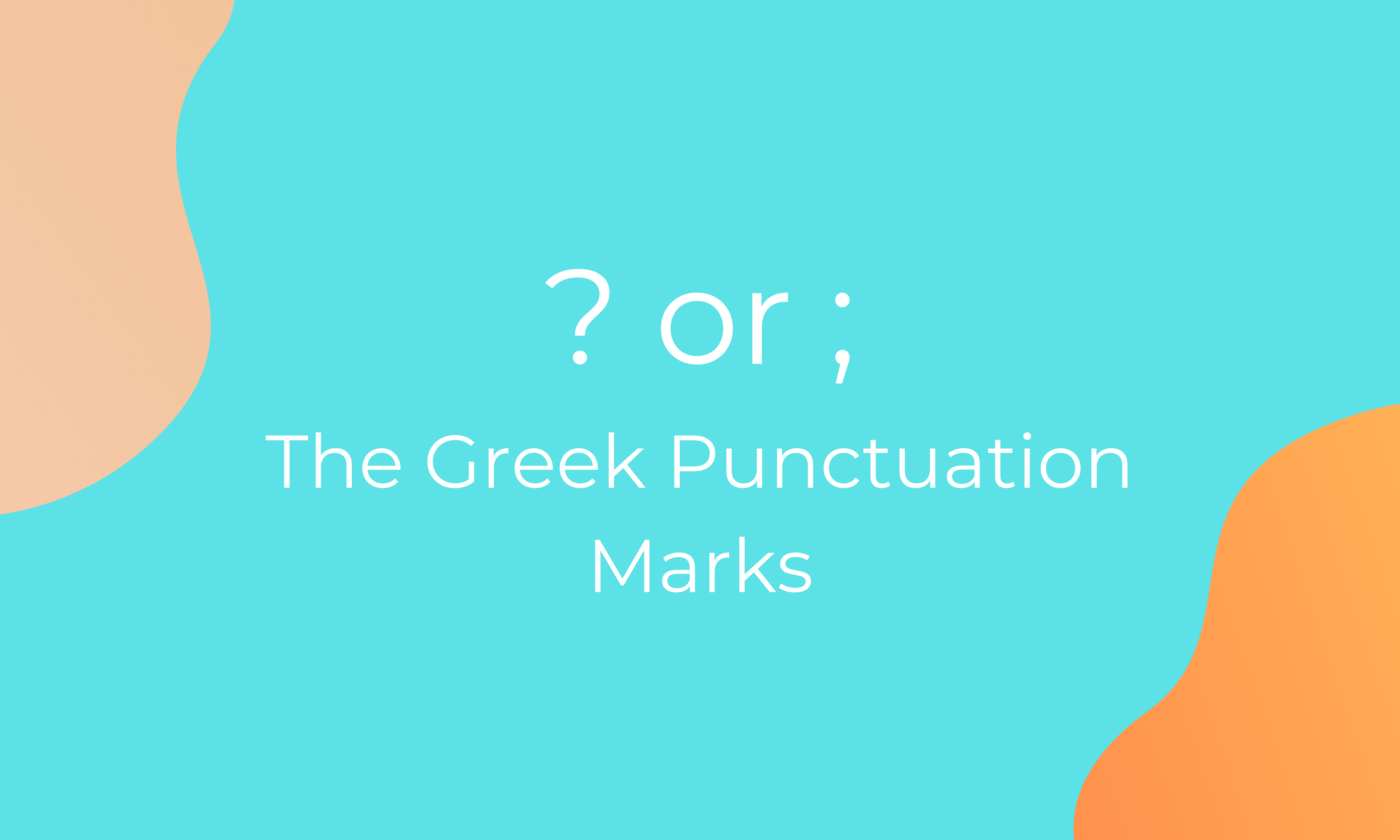
- #Unicode values semicolon greek question mark software#
- #Unicode values semicolon greek question mark code#
'Print the loaded items to the Immediate WindowĮnd Sub It works! Thanks, Greeks! That's a Latin semicolon, not a Greek question mark. UnescapeSemiColon = Replace(Text, ChrW(&H37E), " ") Private Function UnescapeSemiColon(Text As String) As String 'Replace embedded semicolons with the visually-indistinguishableĮscapeSemiColon = Replace(Text, " ", ChrW(&H37E)) Private Function EscapeSemiColon(Text As String) As String Me.List5.AddItem EscapeSemiColon(Me.Text0.Value) & " " & _
#Unicode values semicolon greek question mark code#
Here's the code behind the form: Private Sub btnSubmit_Click() This does mean that if the user intentionally entered a Greek question mark into the text box that we would be changing it to a semicolon character. Of course, if we're going to escape the semicolons going in, we should unescape them going out. Since you can't type Unicode characters directly into the VBA IDE, we had to use the wide character function, ChrW.įor consistency, I used the &h number token to pass the hexidecimal value of the Greek question mark character: ChrW(&H37E). To embed the Greek question mark in our code, we need a way to access Unicode characters. In Unicode, it is separately encoded as U+037E ;GREEK QUESTION MARK, but the similarity is so great that the code point is normalized to U+003B SEMICOLON, making the marks identical in practice. It was adopted by Church Slavonic and eventually settled on a form essentially similar to the Latin semicolon. It appeared around the same time as the Latin one, in the 8th century. Self replied, "Are you really not familiar with the Greek question mark symbol?" The Greek question mark looks like. I thought to myself, "Self, surely there's some wacky Unicode character out there that looks like the semicolon character without actually being the semicolon character." There must be some way to escape the semicolon character so that you can add it to the list box, right? Wrong.

Oh no! The embedded semicolon is being treated as a column separator.
#Unicode values semicolon greek question mark software#
So far so good, but what happens when we try to add a value with an embedded semicolon? It's a List Box Injection Attack! The software world's least dangerous hack. I did this simply to demonstrate how you go about retrieving the values from the list box: Dealing with Embedded Semicolons When I close the form, it prints the values to the immediate window. Here's what it looks like when I type my name into the boxes and click Submit: 'Print the loaded items to the Immediate Window when the form closesĭebug.Print Me.List5.Column(0, i), Me.List5.Column(1, i) Private Sub Form_Unload(Cancel As Integer) Me.List5.AddItem Me.Text0.Value & " " & Me.Text2.Value I added the following code behind the form: Private Sub btnSubmit_Click() I made the following changes to the List Box control: I created a new form and added the following controls: To create multiple columns, join the item values with a semicolon.Items can only be added as Strings (i.e., you give up some compile-time type safety).The list box's Row Source Type must be " Value List".I would then use the control's AddItem method to add the two items when the user clicks on the Submit button. Hemant, the way I would approach this is to use an unbound List Box control with no RowSource property.

Data will be stored virtually till form is in running state. Here, we need to build something like disconnected architecture. Here what I am really trying to achieve is whenever End user will input data in both text box’s and click on submit button then entry will go datagrid(In two different columns) one after another. Now datagrid is not connected to any table. Let’s say we have two textbox, submit button and datagrid view in MS Access Form. I received the following article request from reader Hemant ( used with permission surname withheld as requested):


 0 kommentar(er)
0 kommentar(er)
